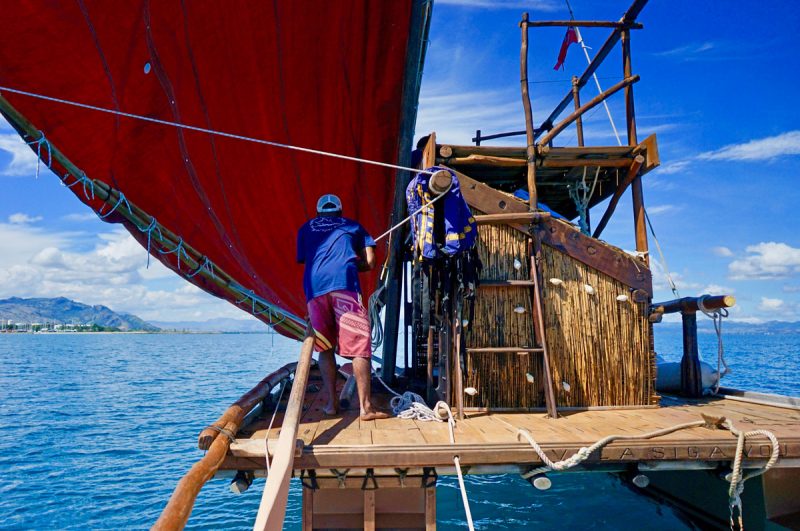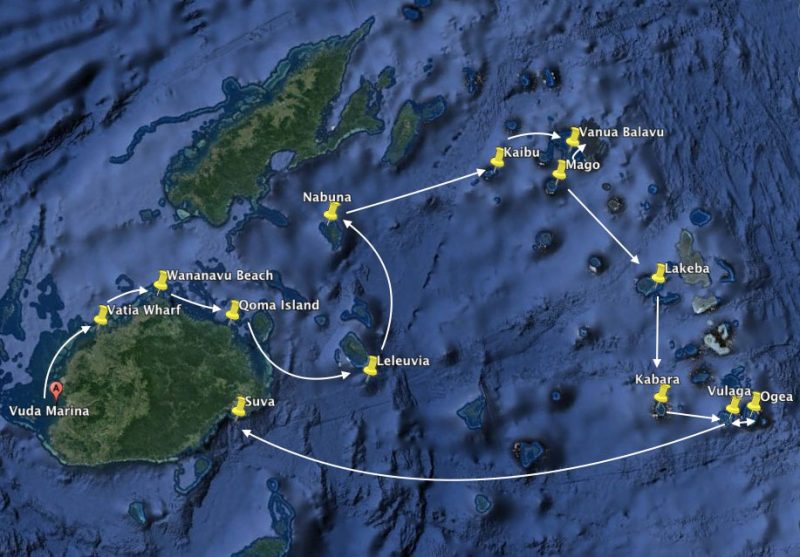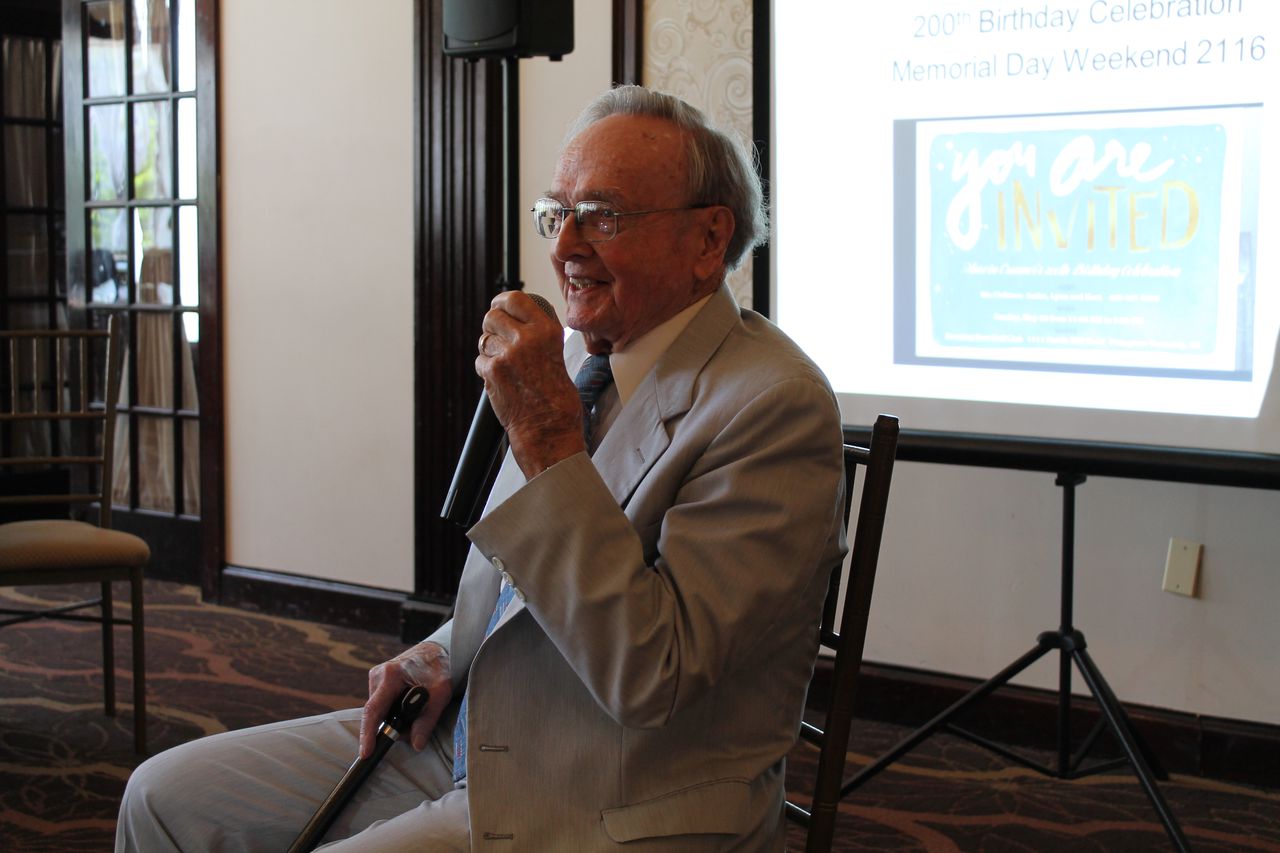
The Smaller the Boat the Bigger the Adventure
We’ve recently sensed a big interest in small boats. There are probably a few reasons for this. The pandemic means large boats can no longer take out large crews, so once-active sailors have been orphaned on the shoreline. Also, large-boat owners can no longer bring large crews to help them manage large boats on and off the dock, so some may be looking for something easier to manage. Mike Dorgan of Dorgan Yachts in San Diego sells big boats, but has reactivated the local singlehanded Finn fleet, which has suddenly grown to 25 owners. We’ve also talked to new small-boat owners who’ve rediscovered the affordability and fun of sailing small boats. The pandemic has limited families’ options for outdoor recreation. A sailboat has been the solution for many.
Recently we went for a sail with new Cal 20 owner and frequent Latitude 38 contributor Michelle Slade. Michelle became inspired when writing our July story about sailing with Anya Bandt on her new (to her) Cal 20 First Rodeo (ex-Fjording). Michelle is suddenly the owner of her own inexpensive Cal 20 that Corinthian Yacht Club was selling. Michelle has done PR for the America’s Cup, sailed thousands of offshore miles, and crewed in many Friday night races. She thought it was time to get a helm of her own. The Cal 20 is perfect. It’s simple to set up and ready to roll with minimal expense.

Dozens of Cal 20s, Santana 22s, Ranger 23s, Catalina 22s and others are waiting to be sailed. Though they may be a bit battle-worn and cosmetically lacking, they still do everything they did when they were first launched. And there are usually other owners around who have old sails to pass along or expertise to share. Active Cal 20 fleet members Richard vonEhrenkrook (Can O’Whoopass) and Jim Snow (Raccoon) were on hand Saturday to help Michelle sort out some of the rigging and get the boat up to speed. Not that speed is the main objective. Fleet friends help figure out the doohickeys and thingamabobs on a ‘new’ boat. Having a simple boat to enjoy frequently is the primary goal.

Michelle wasn’t the only one out on a small boat on Saturday. Roger Krakow was out on his new-to-him Balboa 20, which he bought for $1. Don’t let the low price fool you. You often do have to spend money to get sails, lines and other parts in safe working order, but you can manage the pace of the expenses while you also get in some sailing time. We saw other small boats leaving the dock with young families aboard or young kids in command.


As San Francisco sailors we’re rightly proud of the very challenging sailing conditions we face. It’s a great place to learn. It can also be intimidating on a small boat. Larger boats can be drier and more comfortable. But if your choice is to stay ashore and watch the big boats go by or find a small boat and have an adventure of your own, the choice is obvious. Webb Chiles just finished a six-year circumnavigation of the world on a Moore 24. Wilbur Spaul is planning to push off this fall to sail to Hawaii on an 8-ft boat. In June we wrote about Martin Machado’s winter Delta cruise on his 26-ft Pearson Commander. You have to pay attention, but small will serve you well and get you sailing today.
When these small boats were built and marketed in the 1960s, the primary buyers were families who would go weekend cruising or sailing on the Bay. The brochures showed plaid interiors, Porta-Potties and crews wearing bell-bottoms. These boats hooked many people for a lifetime of sailing. Eventually, many small-boat sailors moved up to bigger boats. Others kept them for decades, like Kurt Hoffman of Santa Cruz, who just sold his Santana 22 after owning her over 40 years. Either way, they had some of their best sailing adventures by getting started on a small boat. It’s great to see many getting reactivated and back sailing on the Bay.
Young Cruiser Killed in Moorea
In a tragic accident in Moorea on August 9, a young cruiser was killed after being hit by a speedboat. According to reports, Eddie Jarman, 14, was checking the anchor on his family’s UK-based Discovery 55 September A.M. in Opunohu Bay when he was struck. Efforts to revive him at the scene were unsuccessful.

Eddie and his family — parents Harry Jarman and Barbara Genda, and 13-year-old sister Amelie Jarman — had departed Lanzarote, Canary Islands, about 18 months ago, and had been cruising French Polynesia for the last nine months.
“Eddie had an amazing zest for life,” wrote his mother on the family’s Just Giving page, which was set up to repatriate the young man’s body to England. “He was bright, with talent and kindness, blessed with musical talent, and expertly played the piano, violin and a double bass. Mature well over his 14 years, he made an indelible mark on everyone he met. In memory of his life and his love for music we are setting up a trust fund which will fund music and school tuition for talented youngsters.”

No further details were available regarding the speedboat, its driver, or the exact circumstances of the accident. According to sources, it was a speedboat rented by a tourist from one of the area hotels.
Back in March, 52-year-old Ellen Tischbin of the New Jersey-based Miclo III was also killed after being struck by a ‘motorized dinghy’ while swimming near her boat in Falmouth Harbor, Antigua.
We don’t have any hard numbers, but our feeling is that incidents like these are thankfully rare. Collisions between dinghies and other small craft such as pangas are probably a bigger problem.
Yes, there are rules in Moorea and most other populated harbors in the world governing speed and safety. The reality is, operators of powered craft often ignore them and go too fast anyway.
Our hearts go out to the Genda-Jarman family. We hope anyone reading this will be extra diligent when swimmers are in the water, be they from your boat or another. You can never be too careful.
Update: According to a report in the Mid Sussex Times, Eddie’s family has now returned home and plans to lay his body to rest in their local churchyard in West Hoathly.
Let’s Do Lunch at Pier 39
Fijian Drua Homecoming Journey
While sailing events around the world are getting canceled one after another due to the COVID-19 pandemic, an entirely new event is just getting underway in Fiji. Na Lesu Tale, which translates to The Homecoming, will take place in October. It will be the first time that a Fijian Drua has sailed back to the Lau Group of islands in modern recorded history. Owned and operated by the Drua Experience, the 40-ft-long Drua i Vola Sigavou — which means New Rising Star — will embark on this historic journey just after the nation of Fiji celebrates the 50th anniversary of its independence from England on October 10.

“Because of the COVID-19 pandemic, there’s no tourists in Fiji. We are not expecting any international tourists in the next six months or so,” explains i Vola Sigavou skipper Setareki Corvus Ledua. “So we thought to ourselves, this could be the perfect time to go out to the Lau Group and do more research and collect all the evidence that is still available.” A Drua enthusiast and professional sailor in Fiji, Seta hails from the Lau Group of islands in eastern Fiji. The island group is the spiritual home of Fijian Drua, and where most of the knowledge of these traditional craft remains. When the few elders who still possess this knowledge pass away, so too will this last remaining link to a vital piece of Fijian culture and maritime history. Unless it is preserved.

Allegedly growing to more than 120 feet in length and capable of carrying upwards of 200 Fijian warriors to windward at 15 knots, Drua were the most grand of all of the canoes of the Pacific — the first fleet of ocean-crossing bluewater boats in history. While many remember when the last remaining Drua sailed away from the Lau Group, there is no record of when a Drua last sailed back into the Lau Group. This Na Lesu Tale homecoming journey is an effort not only to revive and preserve traditional Fijian Drua culture, but to continue to build the Drua Experience’s program that teaches Fijian youth to both sail and build Drua.

With Fiji’s borders closed and i Vola Sigavou’s normal tourism-based revenue stream having all but dried up, the Drua Experience is fundraising to make this journey a reality. They have a GoFundMe page set up, and we hope that Latitude Nation’s geographically diverse readership can pitch in a few bucks to help them reach their fundraising goal of $24,000.

Marvin Creamer, Sailor Who Shunned Technology, Dies at 104
Marvin Charles Creamer, the first (and perhaps only) person to complete a circumnavigation without the aid of navigation instruments, died on August 12 in Raleigh, NC. He was 104 years old.
Creamer was a geographer, a college professor, and a sailor who famously undertook a 30,000 mile voyage aboard his 36-foot sailboat Globe Star using only his knowledge of celestial navigation and geography. The then 68-year-old successfully steered his boat and his crew across oceans and into numerous foreign ports, over 513 days before returning to his starting point in Cape May, NJ.

According an article in The New York Times, Creamer did carry — at the insistence of his wife — a sextant, clock, compass and radio. However the instruments were kept belowdecks in a sealed locker for use only in case of emergency. The locker was never opened.
In the years following the voyage, the former Rowan University professor would often give talks about his life and his voyage. On one such occasion, speaking in front of a group of the university’s students and guests, Creamer said that despite the risks, he was 95% certain of success.
“I was aware that I might not make it. But if I died during this trip, at least I would have died doing what I wanted to do,” he said.
Creamer had alway been drawn to sailing and had dreamed of sailing without instruments since his teenage years. As a young adult he became an accomplished sailor and completed several Atlantic crossings — three of them without navigation equipment.
“I was hooked. Taken hostage by an idea,” he said to the students. When questioned about his inspiration for circling the globe, Creamer told them the idea had come to him ‘in the middle of one idle night.’ “I just wanted to do it so badly.”

In honor of the intrepid professor turned global sailor, Rowan University established the Marvin Creamer Scholarship Fund in 2015. The annual scholarship is awarded to the graduating student who not only demonstrates academic achievement, but also shares the “character and attitude of Dr. Creamer: intellectual curiosity and spirit of adventure.”

Creamer’s son, Kurt, told NJ Advance Media that he had accompanied his father on many sailing journeys including a “substantial voyage” when the senior Creamer was 95.
“It only dawned on me slowly over many years just how remarkable (and dangerous) a navigational feat it was that he had accomplished.”

